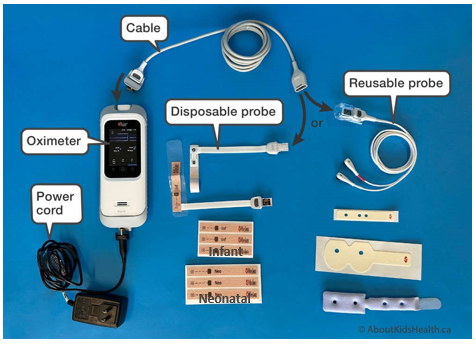ALERT: How to recognize and manage low blood sugar in children with diabetes at school?
Connected Care Quick Hits are up to date and evidence based recommendations for the care of children with medical complexity & technology dependence, from hospital to home.
ALERT: How to recognize and manage low blood sugar in children with diabetes at school?
SITUATION:
This Quick Hit was informed by questions asked by nurses and school staff supporting children with diabetes in home and community settings.
BACKGROUND:
School staff and home and community care providers supporting children with type 1 diabetes at school require knowledge and a plan to respond appropriately to episodes of low blood sugar that may present at any time during the child's school day.
A diabetes management plan outlines a child’s specific signs and symptoms of low blood sugar and the appropriate treatment at school. This management plan also outlines individualized strategies to limit the frequency of low blood sugars that occur at school. For example, plans for the child to have enough time to eat all of their lunch and/or be supervised (if needed) to safely self-administer their insulin dose.
The diabetes management plan is typically developed by diabetes care teams, students, family caregivers, teachers and other school staff at the start and regularly throughout the school year. Home and community care providers are engaged in direct delivery of care at school or consultation when children are progressing towards being independent in their diabetes care.
ASSESSMENT:
For most school-aged children (over 5 years of age), a low blood sugar is a level lower than 4.0 mmol/L. This level may be individualized based on a child’s developmental level and/or cognitive ability to recognize low blood sugar symptoms. This would be outlined in the child’s diabetes management plan.
Most children with diabetes experience a low blood sugar from time to time even with appropriate diabetes management. This is why it is important to continuously monitor for signs and symptoms of low blood sugar and be prepared to act quickly.
Mild to moderate signs of low blood sugar include:
Shakiness
Feeling cold and clammy
Mood changes (suddenly irritable or bad tempered)
Lack of energy
Blurred vision
Fast heartbeat
Pale skin
Feeling anxious
Hunger, along with nausea due to hunger
As blood sugar levels continue to drop, more advanced symptoms may begin to develop. These signs and symptoms may include:
Slurred speech
Difficulty walking
Temporary paralysis
Loss of consciousness
Seizures
RECOMMENDATION:
Connected Care recommends, in collaboration with the Diabetes Team at SickKids, the following for prevention and management of low blood sugar in children with diabetes at school:
Check in with the child and monitor for signs and symptoms of low blood sugar especially after physical activities and between meals.
Do not leave the child alone if a low blood sugar is suspected as symptoms can worsen quickly.
Treat the low blood sugar where it occurs. Do not bring the child to another location as this may delay treatment and walking may make the child’s blood sugar lower.
Discuss the child’s diabetes management plan with family caregivers. Review this plan with teachers and other staff at school and confirm their role in the event that the child experiences a low blood sugar.
Ensure that appropriate medical supplies are available and easily accessible at school (e.g. fast-acting sugar and glucagon kit).
Plan ahead for extra activities at school with prepared snacks or an insulin reduction.
If a child experiences a low blood sugar at school, review what may have caused it at the time and develop a plan with the child, family caregivers and school staff to avoid low blood sugars in the future.
Review the following AboutKidsHealth article that outlines the treatment of mild and severe hypoglycemia.
For additional resources on management of diabetes at school, visit www.diabetesatschool.ca
Connected Care is offering a new webinar on Supporting Diabetes Care in the School Setting!
Register now using the following link: https://www.connectedcare.sickkids.ca/education-modules/diabetes
If you would like to request a webinar for your school or district, please let us know!
Connected Care Live is not to be used in the event of an emergency.














